We advise on problems from
Hernia
Learn more about hernias and their treatment
What is a hernia?
A hernia is a protrusion of the abdominal cavity due to a decreased strength around the abdominal wall. Hernia comes from the Middle Low German word “brock” meaning break, which simply means that it occurs in this case.
At the front of the body is the abdominal wall, which primarily serves to enclose the various structures in the abdominal cavity, which are the vital organs. A hernia is therefore a protrusion that occurs due to the pressure from the organs in the abdominal cavity becoming greater than the strength of the abdominal wall.
Jump to section [Vis]
Different types of hernias
The most typical types of hernia are the following four:
- Inguinal hernia (at the groin)
- Umbilical hernia (around the navel and typically seen in children)
- Femoral hernia (at the transition to the thigh)
- Hernia (due to surgical scars)
Among the above, inguinal hernia is the most common. In some cases, parts of the intestine can become pinched inside the hernia (the hernial sac), and in these cases, severe pain and tenderness often occur, requiring emergency surgery. This condition is called a strangulated hernia.
Why do people get hernias?
Since there are different types of hernias, there are naturally different causes for each type of hernia. For example, if an inguinal hernia or umbilical hernia occurs in children, the cause may be a hereditary congenital weakness in the abdominal wall – in adults it may be due to an acquired condition. This may be due to heavy lifting, being overweight, pregnancy and other conditions that create increased pressure in the abdominal cavity. (Source: Sundhed.dk).
Due to limited documentation of the acquired conditions, the evidence for these associations is debatable.

Common symptoms of hernia
The general symptoms of hernia are most often:
- Pressure
- Stinging sensation
- Discomfort
- Pain
- Sensation of heaviness if the hernia is large
In cases where the discomfort increases and severe pain with a possible tendency to vomit is experienced, you should seek medical attention urgently, as it may be a strangulated hernia. In the case of strangulated hernias, reduced blood supply may occur, which can lead to gangrene, which is why it is particularly important to seek medical attention urgently.
When coughing, sneezing or other situations where you otherwise push your stomach out, a visible bulge can occur, which may indicate that you have a hernia.
Studies on the causes of hernia formation
In June 2022, SSI shed light on the cause of hernias in a major research study. Using data from the UK, Finland, Estonia and Denmark, they found a link between genetics and the environment with hernias. The study looked at 5 common types of hernias:
- Inguinal hernia
- Hiatal hernia
- Umbilical hernia
- Femoral hernia
- Abdominal hernia
The study found 81 gene variants that correlated with the risk of developing one of the above conditions. The main gene variants found were those that affect the structure of the body’s connective tissue, namely collagen and elastin. These proteins are components of the fibers of connective tissue. Therefore, there is an indication that individuals’ genetic structure of connective tissue and the maintenance of connective tissue are related to the risk of developing hernias.
Since it is precisely about the maintenance of connective tissue, the study has also shed light on diseases and health-relevant lifestyle factors compared to the genetic connections, which may have a causal relationship to hiatal hernia.
In this, body mass index (BMI), depression, smoking, cognitive and reproductive traits were found to be factors that may influence the risk of developing a hiatal hernia and, to a lesser extent, abdominal hernia. This is just one perspective that can give an idea that there are several aspects that may influence the risk of developing a hernia.
Therefore, it should be emphasized here that lifestyle factors, such as sleep, diet, exercise, smoking, alcohol and general stress should be considered in the case of recurring experiences of hernia.
Since osteopaths work with a holistic approach, it would be obvious to seek out an osteopath in these cases to ensure an appropriate course of action.

Treatment options for hernias
Surgery is always recommended for hernias in children and adolescents, as it can prevent the hernia from becoming pinched. However, this does not apply to children and adolescents with umbilical hernias.
Treatment of hernias can be done without surgery, but surgical interventions are still often used.
For adult men, surgery is not performed if there are no problems associated with the hernia. On the other hand, it is recommended that adult women undergo surgery, as inguinal hernias can, over time, lead to acute entrapment with intestinal torsion. (Source: Sundhed.dk).
The surgical method varies between adolescents and adults:
- In adults, an artificial mesh is surgically inserted to reinforce the abdominal wall, ensuring that the contents remain in the abdominal cavity.
- In children, however, an operation is performed to close the weak spot in the abdominal cavity after the hernia sac has been removed.
Most patients undergo laparoscopic surgery rather than open surgery, and especially in these cases where surgery is performed, osteopaths have extensive experience in restoring the elasticity of connective tissue and providing patients with the best possible conditions through manual treatment techniques. Therefore, it would be appropriate to seek out an osteopath in these cases where advice or help with the treatment of scar tissue is needed.
Recommendations for people with hernias
A general recommendation for patients who have hernias is the following:
- Patients with hernias who have pain when lifting heavy objects should avoid this and excessive activity.
- If you suddenly experience pain from a hernia, you can try to press the hernia back into place while lying on your back. It is then recommended to see a doctor.
- After surgery for very large hernias, you should wait with heavy lifting and heavy activity for the first few weeks after surgery.
- For minor surgeries around the groin and abdominal wall, it is only the individual’s pain tolerance that limits heavy lifting and the level of activity in the subsequent course.
(Source: Aleris)

Hernia prevention
If you don’t have a hernia and would like to prevent this, the following recommendations may help:
- Smoking cessation.
- Weight loss (in case of overweight).
- Do not drink too much alcohol.
If, on the other hand, you have a hernia, have had surgery, and would like to avoid a new hernia, the following advice may help:
- Avoid gaining more weight and consider losing weight if you are overweight.
- Avoid tobacco and excessive alcohol consumption.
As is clearly evident in the recommendations, lifestyle factors such as smoking cessation and alcohol intake are particularly emphasized, which is why these should be considered in particular if you have a hernia.

Often related pain

Side stitch
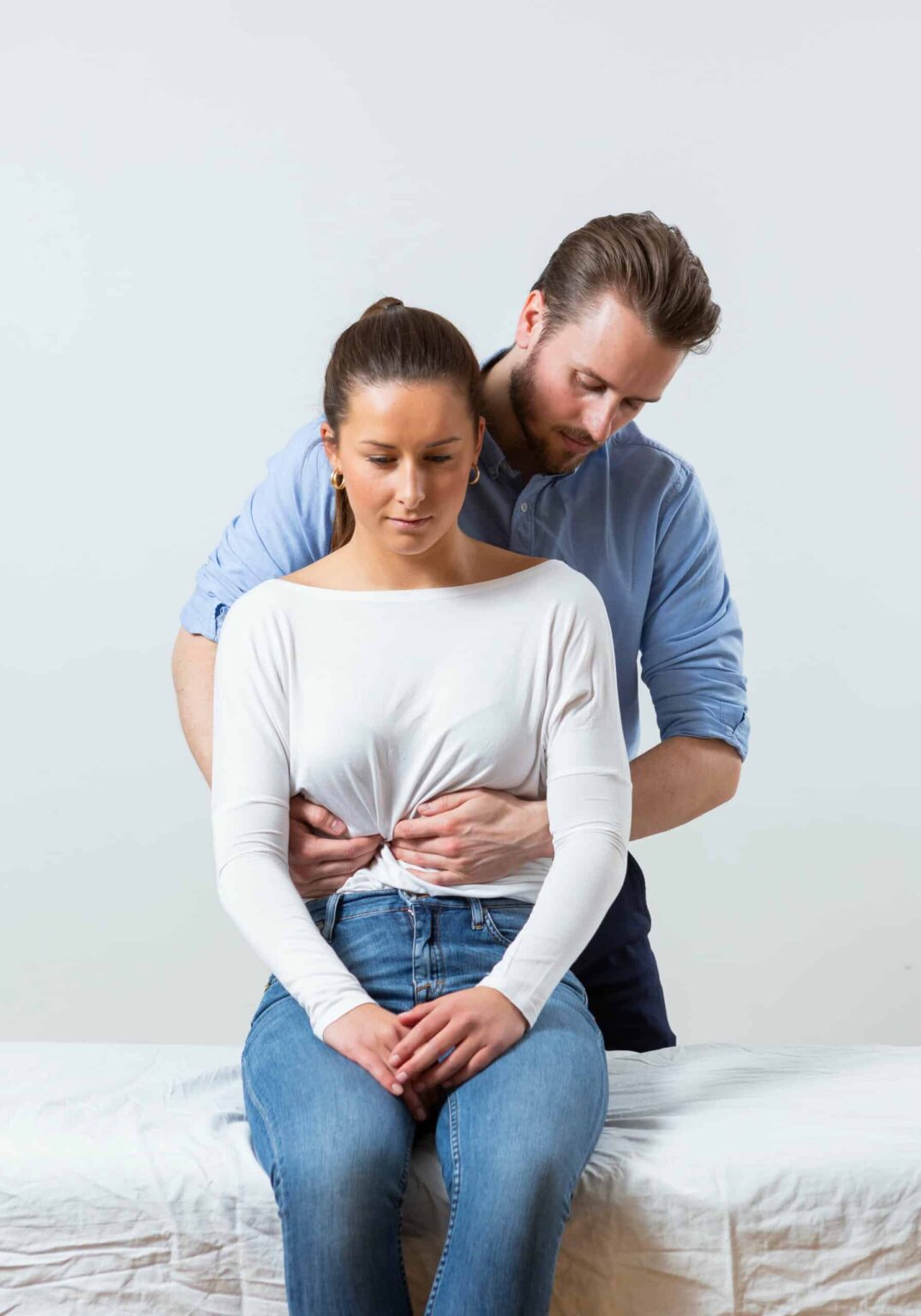
Hidden constipation
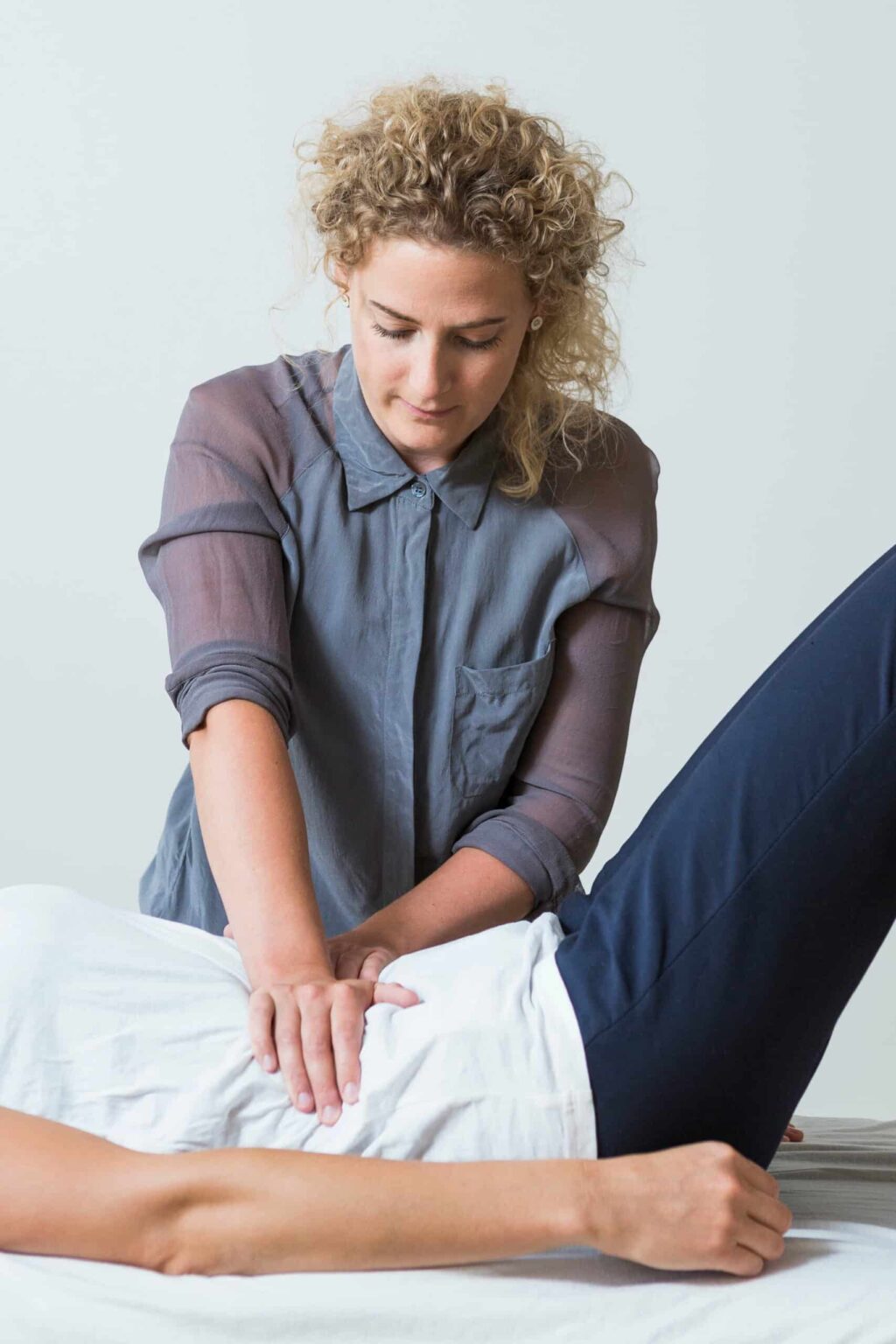
Urinary incontinence
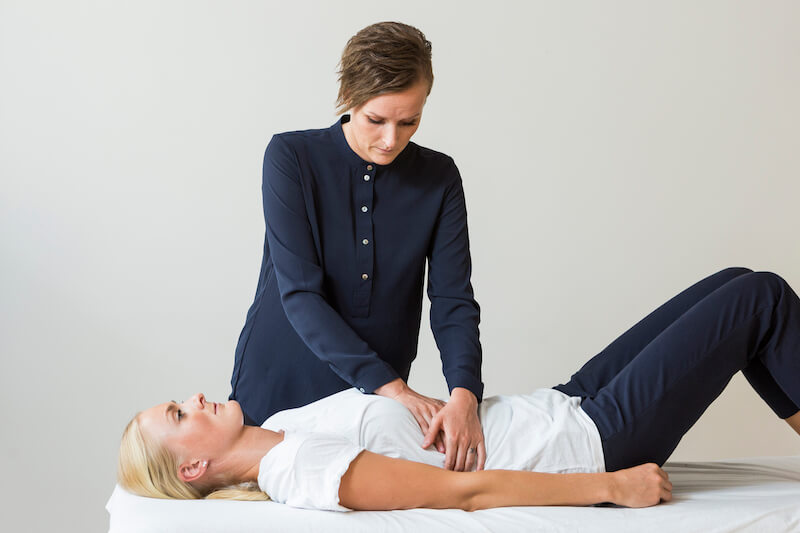
Celiac disease
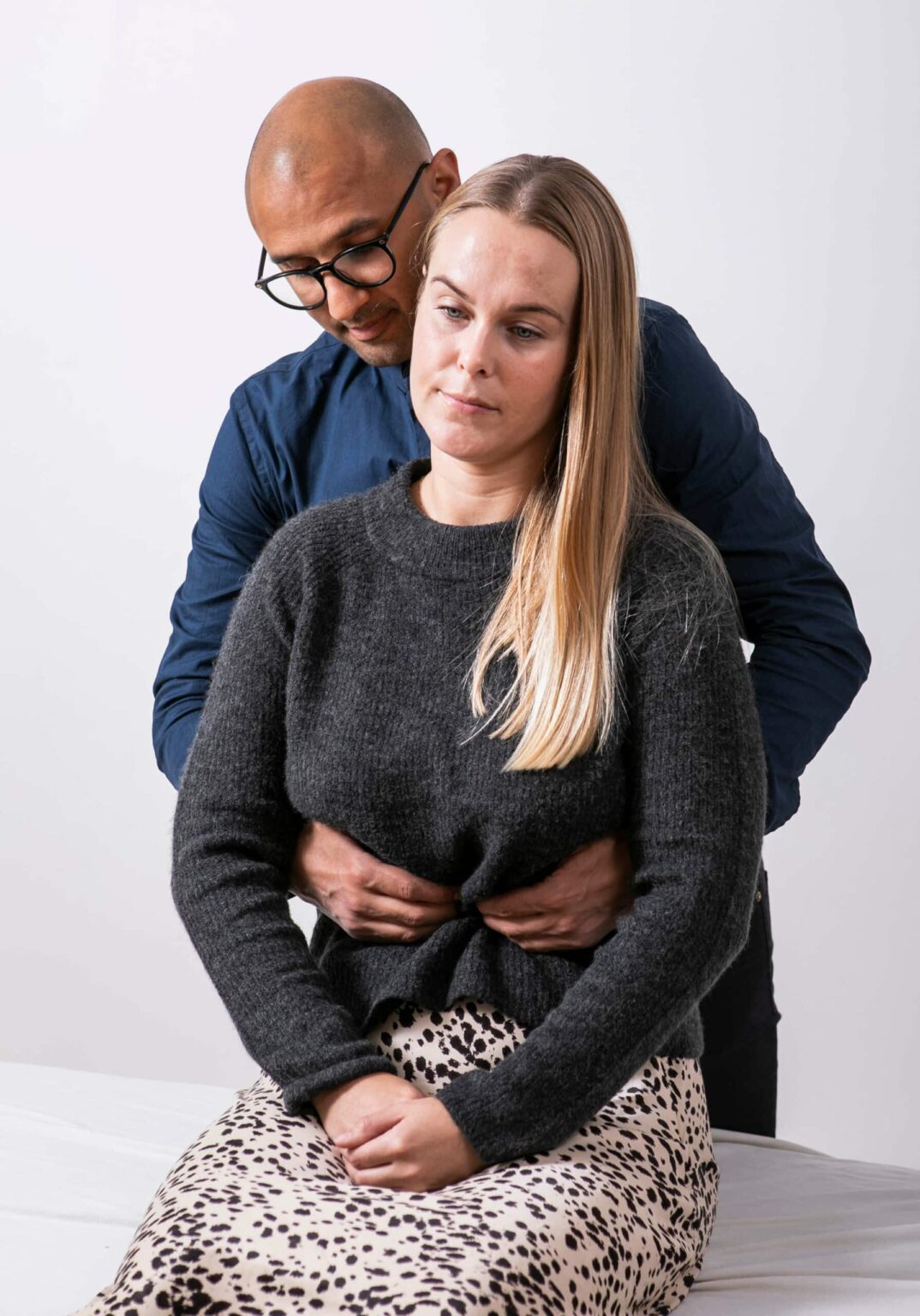
Ulcer

Hernia
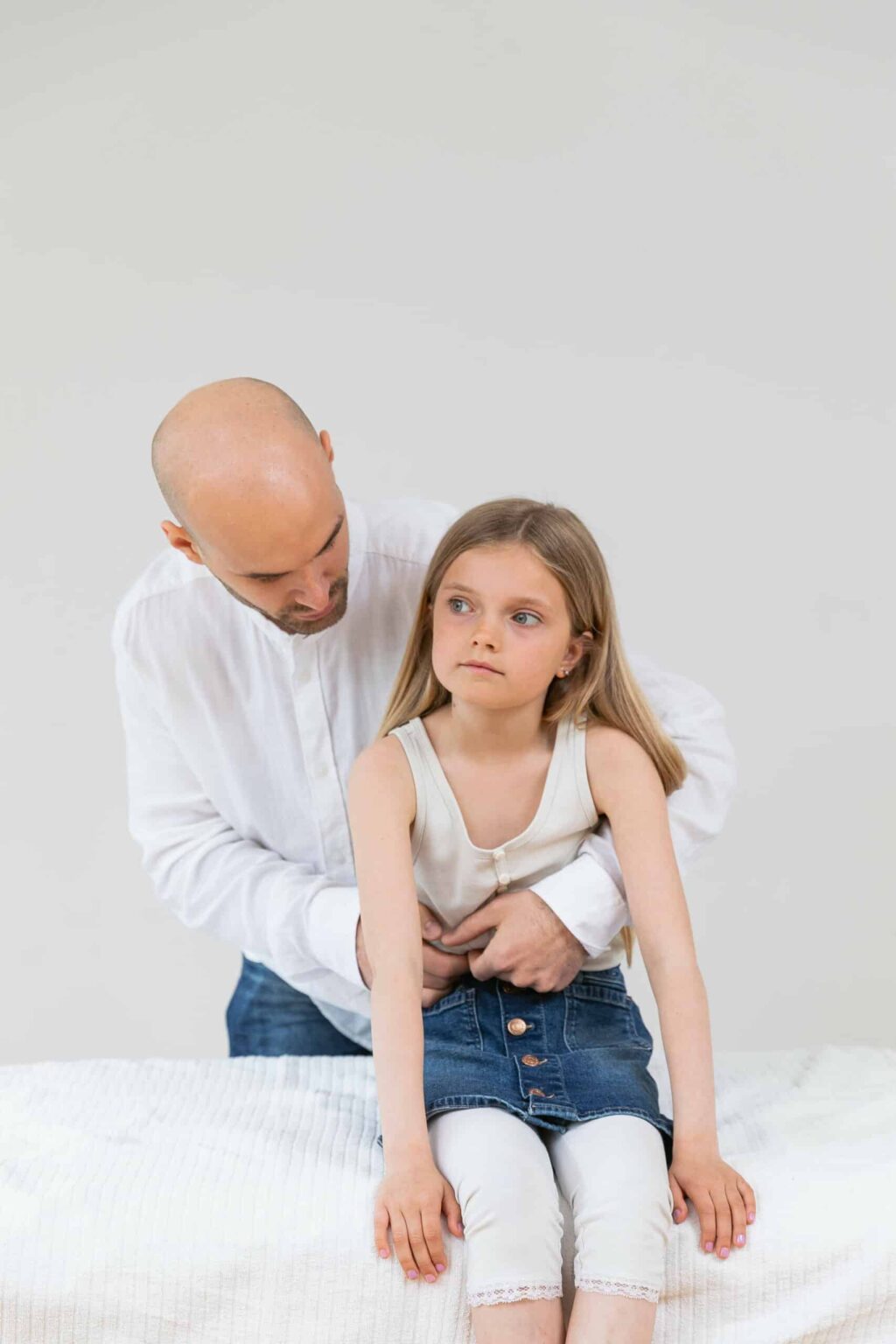
Lactose intolerance

